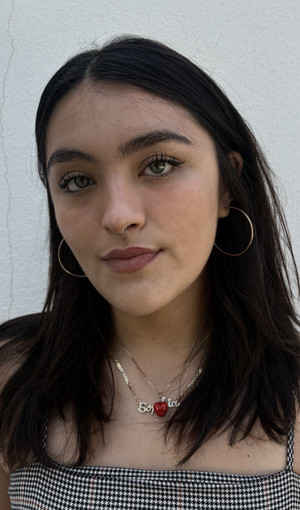Framing the Arts: Looking Outside the Canvas
Written by Sophia Plancich
Published on October 29, 2024
When walking through a museum, the primary allure is often the art- the beautiful paintings, photographs, sculptures, and more. These pieces carry immense historical and cultural significance, drawing both art enthusiasts and casual visitors to celebrate creativity and cultural preservation.
Art museums are typically curated to be visually striking and thoughtfully arranged spaces, where every element, down to the layout, is meticulously considered. This highlights how the careful curation and layout of space can create an environment to support the valuable artworks being displayed. This attention to detail highlights the power of curation, as curators not only select works but also shape the narrative of space, offering historical and cultural context through academic and aesthetic interpretations. This is where curatorial intervention subtly emerges, but for now, I’d like to focus on an element that is more traditionally overlooked.
I invite you to step slightly outside the box, or canvas in this case, to the frame. Framing the arts, while often seen as a minor detail, plays a vital role in how works of art are displayed, reflecting their value and ensuring that each painting is properly complimented. The frame is often overlooked by the average museum-goer. This blog post aims to shed light on their importance, illustrating how these often-overlooked elements can deeply influence how a piece is received.
Throughout art history, the design and significance of frames have evolved alongside artistic movements and styles. Yet despite this intertwined relationship, frames often remain unnoticed by modern museum visitors. A brief dive into the history of the frame shows us that one of the earliest known physical frames dates back to Ancient Egypt in the second century AD. During the Gothic period, artistically framed borders became a staple in Christian art, borrowing techniques from Egyptian and Greek traditions, such as carved ivory used to frame altarpieces. Over time, this evolved into the use of mitered molding strips, allowing frames to be created on wooden panels- a more affordable and accessible medium that helped spread the use of frames throughout Europe. By the time we reach the Baroque, Rococo, and Neo-Classical periods (roughly 1600 to 1830), frames had become ornate symbols of wealth and grandeur, with works taking direct influence from Greek and Roman art.
Today, museums employ frame experts and designers to restore historically important frames or to craft them anew by hand. While frames lend authority to works of art, they also have different impacts on the visual experience of art. Psychologically, frames can aid in evoking emotional responses–whether the boldness of their design evokes intensity or the intricate delicacy of a frame prompts quiet reflection. Understanding the value and importance frames can bring to artwork is critical for fully appreciating the painting and curatorial experience.
With this in mind, I challenge visitors of the Lowe Art Museum to look outside the canvas on their next visit, taking a moment to observe how a frame interacts with art and enhances the overall visitor experience.
References:
“History of the Frame” (n.d.) Fusion Fine Art Framing. https://www.fusionfineartframing.com/history-of-the-frame#:~:text=The%20history%20of%20frames%20is,divide%20scenes%20and%20as%20ornamentation
Pritchard, A. (2013) A hand-crafted Frame: The Other Artwork on the Wall. Denver Art
Museum. https://www.denverartmuseum.org/en/blog/hand-crafted-frame-other-artwork-wall#:~:text=A%20Hand%2DCrafted%20Frame:%20The,the%20Wall%20%7C%20Denver%20Art%20Museum
Simon, J. (2006) Extending the Frame. National Portrait Gallery. https://www.npg.org.uk/collections/research/programmes/the-art-of-the-picture-frame/other-studies-extending-frames






